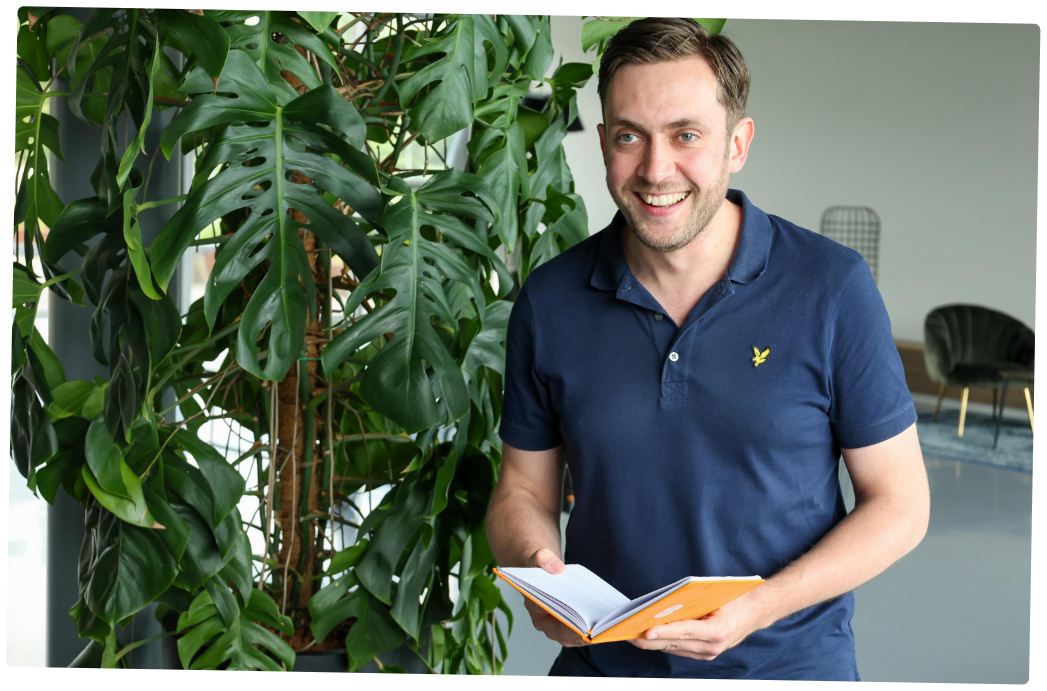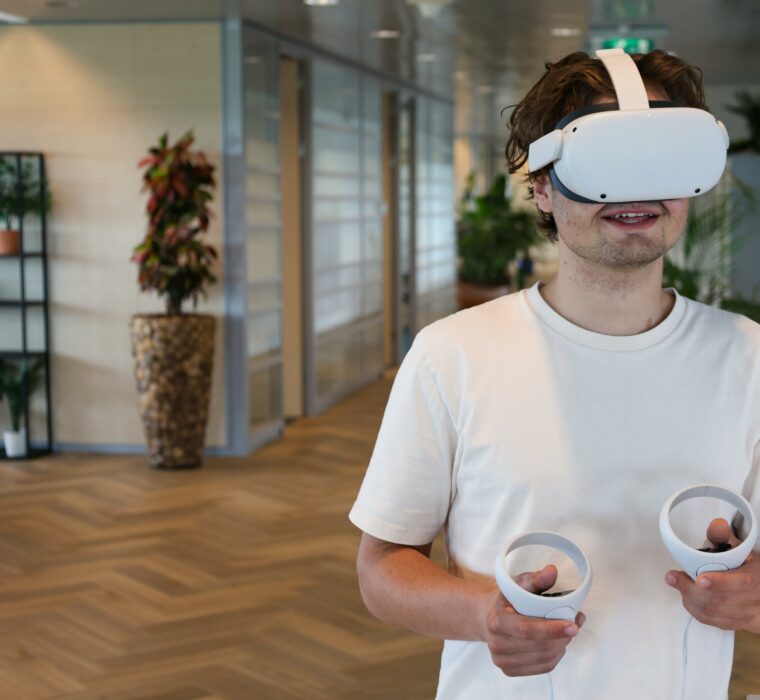
Hey Thiemen,
Less text, more images.
Indeed, I sometimes hear it coming out of the design loft.
And you are not the only ones.
As a learning consultant, you frequently encounter clients who specify from the early stages of a project that a learning solution should contain as little text as possible.
Because “our people are not that into reading.
Because “text is less appealing than image.
Or – this one totally hurts me as a language lover – because “text is way too dry and boring.
Of course, learning solutions largely come to life through interactivity and visual content.
When I became an inBrainer, I had to swear on my life that digital learning solutions are much more than a digitized book.
And rightly so.
How often acquaintances show me examples of e-learnings within their organizations, where the learning solution is little more than some pieces of text with a clichéd stock photo next to it….
You really shouldn’t underestimate in how many places that is still the interpretation of digital learning anno 2023.
Do you find it crazy that the use of text in learning solutions automatically provokes reflexes like “demotivating” and “boring”?

Either way want to catch the train
The premise of “as little text as possible” is the other extreme.
Clients thus start thinking in form far too early.
You don’t even know what you want to achieve yet, but are already dead set on determining how.
Like getting on a train and then thinking about what your destination actually is.
Purely because you wanted to catch the train anyway.
The desire for little text contains all sorts of assumptions toward the target audience.
I can, of course, adopt these assumptions in good faith.
The client says it and they know the target audience best.
But isn’t it the learning consultant’s job to investigate whether those assumptions are correct?
Hup, off my chair!
We really figure out for ourselves what will appeal most to the target audience.
By sifting through the source files of the learning solution.
By analyzing the target audience and engaging with participants.
We will have to in order to properly determine the most effective form of offering certain content.
Harnessing the power of language
Indeed, by writing text out of your learning solution in advance, you ignore the great power of language within digital learning.
Provided properly applied.
Text may have a stuffy image, you can do darn fun things with it.
For example, by incorporating humor into our learning solutions.
Or by applying storytelling for more experience.
Of course, you can convey stories using an animation or video, but often enough we still fall back on text in the process.
Because written text gives a lot of room for interpretation, for imagination.
And that activates the brain.
A good basis for achieving better learning.
I recently came across a cartoon depicting the thoughts of two figures sitting in front of the television and holding a book, respectively.
The TV viewer projected in his mind one-to-one what was shown on the screen.
The reader fantasized lustily in his mind, based on words and sentences.
Okay, well lol to undercut audiovisual content like that.
But somewhere there is a grain of truth.
If you read Harry Potter books, you can completely color that wizarding world for yourself.
Harry has glasses, black hair and a scar, but it’s up to you exactly what else he looks like.
If you watch the movies, that coloring has already been done for you and the main character suddenly looks suspiciously like Daniel Radcliffe.
Let’s be clear: There are absolutely times when you need to present a target audience with as little text as possible.
But let that not be a premise, but a conclusion.
A conclusion derived from careful analysis of the target population.
This is the only way to make the best use of the various ways to offer content, without already eliminating opportunities based on assumptions.
Lifelong learning. For ages the magic phrase within the world of (digital) education.
As learning professionals ourselves, how are we actually doing on that front?
Say
@Jara
, are you a bit of a lifelong learner?
Let me know!
Greetings!
Ivo

Ivo Terpstra is Digital Learning Specialist at inBrain.
With his background in journalism and love for language, he is always looking for creative ways to communicate a story to the target audience in a clear way.








